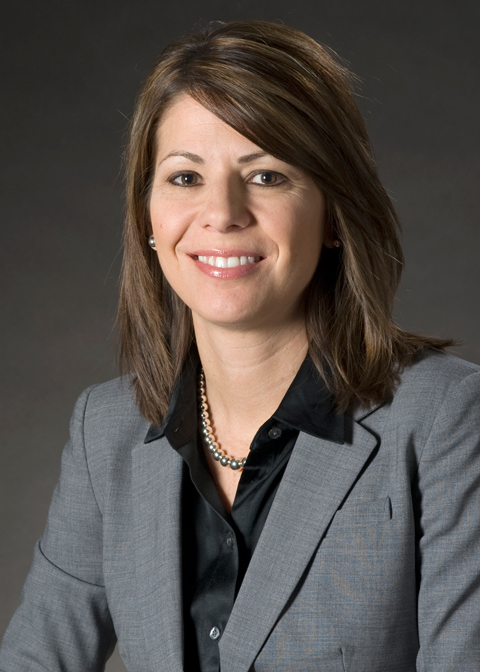
As published in the March 1, 2016 Toledo Business Journal

Wendy Gramza
Toledo Regional Chamber of Commerce
Toledo tax increase threatens growth
The Toledo Regional Chamber of Commerce and Toledo Area Small Business Association (TASBA) recently rejected the City of Toledo’s plan to ask voters to approve an increase in its income tax. Wendy Gramza, president, Toledo Regional Chamber of Commerce, addresses the organization’s decision to oppose Toledo’s ballot issue for a tax increase.
Toledo Business Journal: Can you first explain the membership of the two organizations?
Wendy Gramza: The Toledo Regional Chamber of Commerce, a network of over 1,800 businesses of all sizes and types, is the largest chamber in northwest Ohio. It is led by a board of 41 business leaders that represent a cross-section of the region’s business community. The Toledo Area Small Business Association (TASBA) is the Chamber’s small business division. While not a separate organization, TASBA does have its own board consisting of 28 representatives from the small business community, and can take positions on issues independent from the Chamber’s board.
TBJ: Can you discuss your request to the City of Toledo concerning a review of its operating budget that the City claims will have a significant shortfall?
WG: The Chamber and TASBA boards understand the need for the existing three-quarter percent temporary income tax to fund the operations of the City. However, before asking the taxpayers for more revenue, the boards feel that it is necessary for an independent look at the City’s budget to identify possible reallocation of existing resources.
We are not calling for an audit of the City, as that already takes place on an annual basis under the direction of the Ohio Auditor of State. A financial audit looks to ensure that the city is complying with the laws and regulations relating to the expenditure of public funds. Just as businesses do, this independent look at the budget would provide the costs associated with the functions performed by the city.
TBJ: What is priority-based budgeting and how might it assist the City of Toledo?
WG: Priority based budgeting helps to answer the following questions:
- What must the City accomplish?
- How will the City measure progress and success?
- How much money does the City have available to spend?
- What is the most efficient and effective way to deliver essential services within the available funds?
Having answers to these questions will assist City leaders in developing a budget that is structurally sound and effectively allocate resources to meet the needs of businesses and residents alike.
TBJ: Can you discuss who might do a priority-based budget analysis and the offer your organization has made to the City of Toledo concerning the funding for this work?
WG: The Center for Priority Based Budgeting has proposed this look at the City’s budget. The Chamber has offered to pay the costs associated with the first phase, approximately $12,000.
The Center was established in 2010 to provide technical and advisory services to local governments, school districts, and other non-profit agencies.
The first phase of the proposal would build an inventory of the City’s programs or activities and identify the cost associated with each program. This initial look at the costs would provide Council members, department officials, residents, and other community stakeholders a better understanding how existing resources are used by the City.
The Center has performed this look at budgets in more than 100 communities across the nation. Priority-based budgeting has been nationally recognized by the International City/County Management Association (ICMA), the Government Finance Officers Association, and the Alliance for Innovation.
In 2012, ICMA declared priority-based budgeting a leading practice for local governments due to the process’ results-oriented resource allocation.
TBJ: What is the timing of the current ballot issue for this City of Toledo tax increase and how would the priority-based budget analysis that the Chamber is recommending impact the ability of the City of Toledo to take a tax increase to the voters if additional funds are needed?
WG: The Center has said that the process could be completed in as little as eight weeks. Although this would not be completed prior to the March election, the City would have two additional opportunities to submit either a renewal or increase to voters before the end of the year when the existing temporary three-quarter percent income is set to expire.
After completing the priority-based budgeting process, one of two results can be expected: additional tax revenue is needed or existing resources could be reallocated to address infrastructure needs.
TBJ: The Chamber and TASBA believe that a City of Toledo tax increase will have a harmful impact on economic development. Can you discuss this issue?
WG: One of the many considerations for a business as it decides where to locate is the tax rate. If the City’s proposal is approved in March, Toledo would have the highest rate in the region and tied for second highest in the state.
It is important to remember that the tax is levied on the income of corporations doing business in Toledo, not just individuals. Owners of businesses organized as pass-through entities are also impacted by the changes in the income tax rate.
TBJ: The City of Toledo has projected that the new tax increase will bring $18.6 million of new revenues. The City does not appear to have included any amount of tax loss for companies that leave in order to move to a neighboring community with lower taxes. Are you aware of any analysis that addresses this issue?
WG: We are not aware of any analysis performed by the City as to the possible movement of jobs out of Toledo to a lower tax jurisdiction.